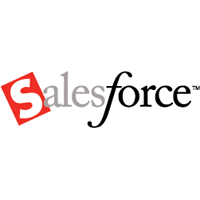salesforce.com, inc. (NYSE:CRM) will release its quarterly report on Thursday, and despite continued strong revenue gains for the cloud-computing giant, Salesforce earnings are seen falling from year-ago levels. Does the earnings slowdown leave investors vulnerable to a pullback, or will shareholders remain convinced that the company will eventually see profits catch up with its sales success?

Certainly, competitive pressures appear to be on the rise for salesforce.com, inc. (NYSE:CRM), with many tech companies seeing the cloud as a fertile source of profits. Yet the company that helped pioneer the idea of providing software as a service retains some competitive advantages against its rivals. Let’s take an early look at what’s been happening with Salesforce over the past quarter, and what we’re likely to see in its report.
Stats on Salesforce
| Analyst EPS Estimate | $0.07 |
| Change From Year-Ago EPS | (36%) |
| Revenue Estimate | $939.25 million |
| Change From Year-Ago Revenue | 28% |
| Earnings Beats in Past 4 Quarters | 2 |
Source: Yahoo! Finance.
Can Salesforce earnings bounce back?
Analysts have ratcheted down their expectations on salesforce.com, inc. (NYSE:CRM) earnings in recent months, cutting their July quarter estimates by $0.05 per share and their full-year projections by nearly a third. The stock has suffered from a malaise as a result, with shares down about 5% since late May.
Much of the pessimism surrounding salesforce.com, inc. (NYSE:CRM) came three months ago, when the company reported its first-quarter results. Despite substantial increases in adjusted earnings and revenue, investors focused instead on the company’s failure to provide upbeat guidance on the future and responded by bidding shares lower.
One major challenge that salesforce.com, inc. (NYSE:CRM) faces is that it relies on its core cloud and customer-relationship management products for the bulk of its revenue. By contrast, larger competitors are able to draw financial resources from other business lines, giving them more latitude to accept early losses in search of long-term wins. For instance, Microsoft Corporation (NASDAQ:MSFT)‘s Dynamics CRM is a relatively small part of its overall business, but if the company chooses to meld it with its broader-based Office 365 product, it could send sales soaring. Similarly, German rival SAP AG (ADR) (NYSE:SAP) has done a good job diversifying its revenue base, and even though it ceded the No. 1 spot in the CRM space to Salesforce in 2012, SAP AG (ADR) (NYSE:SAP) can afford to take its time to look at broader-based strategies that could provide bigger profits in the long run.
But Salesforce made a major move forward by announcing a deal with Oracle Corporation (NYSE:ORCL) to create a nine-year partnership covering the applications, platform, and infrastructure segments of the cloud-computing industry. With the move to integrate their respective offerings, Salesforce captures the deep pockets of Oracle Corporation (NYSE:ORCL), letting it compete more effectively against SAP AG (ADR) (NYSE:SAP), Microsoft Corporation (NASDAQ:MSFT), and other players seeking to get into the profitable cloud-computing niche. In addition, its more recent acquisition of ExactTarget gives Salesforce a stronger presence in the digital marketing segment, tapping into the need to integrate newer vehicles like mobile and social media into the marketing mix.




